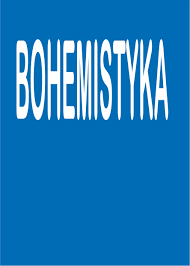Frekvence pádu v projevech afatických osob ve vztahu k používání gestikulace: srovnání s osobami bez diagnostikované poruchy řeči
Frequency of falls in the manifestations of aphasic individuals in relation to the use of gestures: comparison with persons without diagnosed speech disorders
Author(s): Martin JanečkaSubject(s): Language and Literature Studies
Published by: Uniwersytet Adama Mickiewicza
Keywords: aphasia;gestures;case;frequency analysis;syntax;afázie;gesta;pád;frekvenční analýza;syntax
Summary/Abstract: The article deals with a comparison of frequency of noun case in transcriptions of audio-visual recordings produced by people with diagnosed aphasia and people with no visible speech distortion. Considering case distribution in aphasic people’s speech, this article tries to point out some specifics connected to general characteristics of aphasic speech. Further, frequency of autosemantic parts of speech (nouns, verbs and adverbs) in aphasic people’s speech and verification persons is described. This frequency is further connected with number of communication gestures. Based on analysis of aphasic people speech, it is obvious that these gestures can not only accompany their speech, but they can also substitute different autosemantic parts of speech. Results show that, on the one hand, people with diagnosed aphasia use less autosemantic words, but on the other hand, they use more communication gestures than people without speech distortion.Článek se zabývá srovnáním frekvence pádu substantiva v přepisech audiovizuálních nahrávek osob s diagnostikovanou afázií a mluvčích bez diagnostikovaného poškození řeči. Pokouší se ukázat na některá specifika v distribuci pádů v projevech afatických osob, která souvisí s obecnou charakteristikou syntaxe afatických projevů. Dále postihuje frekvenci autosémantických slovních druhů (substantiv, sloves a adverbií) v projevech osob s afázií a standardních mluvčích a dává ji do souvislosti s počtem komunikačních gest, kterými je možné tyto autosémantické slovní druhy nejen doprovázet, ale také nahradit. Výsledky ukazují, že osoby s afázií používají na jednu stranu méně autosémantik, na druhou stranu však více komunikačních gest než standardní mluvčí.
Journal: Bohemistyka
- Issue Year: XXI/2021
- Issue No: 3
- Page Range: 331-345
- Page Count: 15
- Language: Czech

